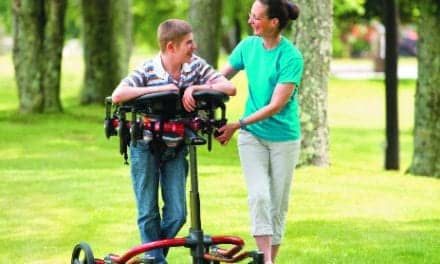Regenerative rehabilitation specialists report positive results from a pilot study of the combination of a single injection of platelet-rich plasma (PRP) and a home-based exercise program for wheelchair users with recalcitrant shoulder pain, in The Journal of Spinal Cord Medicine.
The pilot study was conducted to test a new approach to the treatment of treatment-resistant shoulder pain in wheelchair users with spinal cord injury (SCI) and rotator cuff disease.
Results were encouraging in the study of six participants who received a combination of a single injection of platelet-rich plasma (PRP) into the supraspinatus tendon and a home-based exercise program of stretching and strengthening, according to a media release from Kessler Foundation.
The objective of the pilot study was to evaluate the safety and treatment effect of PRP injection in wheelchair users with SCI and shoulder pain unresponsive to conservative treatment. Six male participants competed the study (3 paraplegia; 3 tetraplegia). All were wheelchair users with a history of chronic SCI (26.7 year ± 11.1 years) and bilateral shoulder pain (> 6 months).
Treatment consisted of bilateral injection of PRP into the shoulder joints. After a 24-hour rest period, participants started a stretching regimen that transitioned to a strengthening protocol at one-month post injection. Followup was conducted at 4, 8, 12, and 24 weeks, consisting of ultrasound evaluation, physical examination, and assessment of pain level. All participants reported decreased pain, with three describing their pain as “much improved” and one “very much improved.” No adverse effects were reported, the release explains.
Shoulder Pain in Wheelchair Users is Common
In this population, shoulder pain is a common cause of disability that hinders functional independence, according to Trevor Dyson-Hudson, MD, director of the Center for Spinal Cord Research at Kessler Foundation. While surgery is an option for pain that fails to respond to conservative treatment, drawbacks include the costs and the functional limitations during prolonged postoperative recovery.
“Conservative treatments that provide alternatives to surgery are needed for this population. IInjection of PRP, which may promote healing of the injured tendon, combined with a graduated exercise program, is a potential option for these individuals. Based on our pilot study, a larger randomized controlled trial is warranted.”
— Trevor Dyson-Hudson, MD
[Source(s): Kessler Foundation, EurekAlert]
Related Content:
Intervention to Help Relieve Wheelchair-Pushing Shoulder Pain Promising, Researchers Report
This is What Makes Wheelchair Users Satisfied with the Ride
NuDigest: Managing Upper Extremity Pain with the Right Wheelchair Configuration





